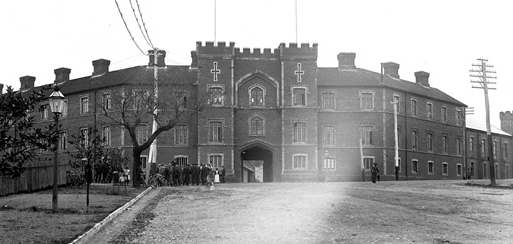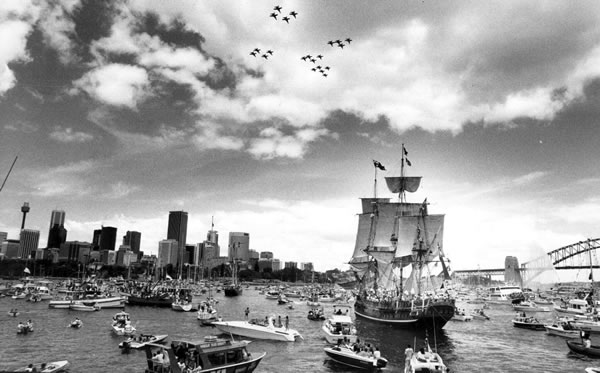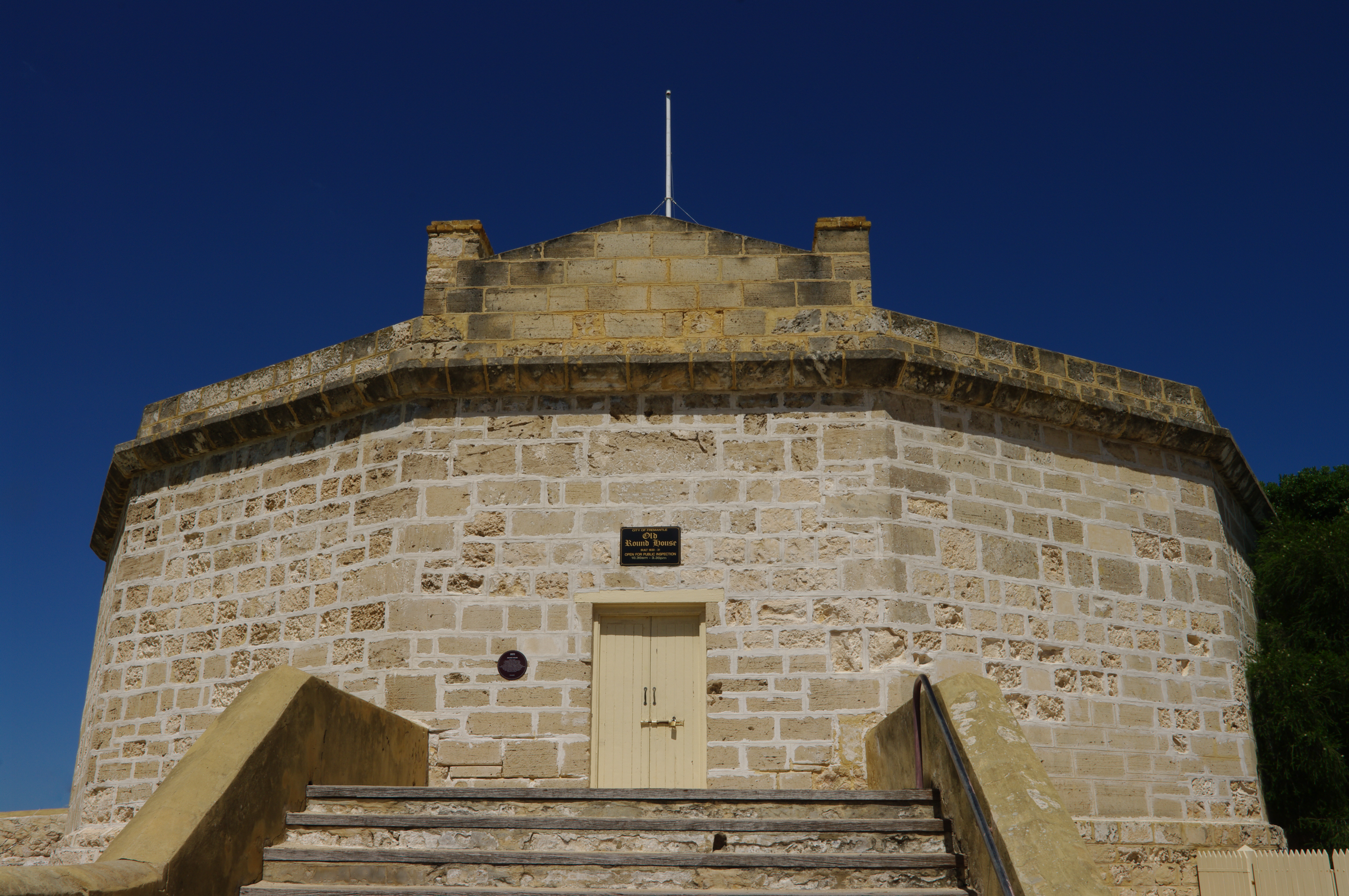|
Heritage Council Of WA
The Heritage Council of Western Australia is the Government of Western Australia agency created to identify, conserve and promote places of cultural heritage significance in the state. Prior to its creation, considerable variance in policy and political controversies arose over heritage issues in Western Australia, such as the Barracks Arch and the demolition of buildings in the Perth central business district. It was preceded by the Western Australian Heritage Committee, which had been heavily involved in the 1988 Australian Bicentenary, and the setting up of the W.A. Heritage Trails Network. It was created under the ''Heritage of Western Australia Act'' (1990). The Council maintains the State Register of Heritage Places. The council also records and lists places that are listed in ''Municipal Heritage Inventories'' which are significant in local communities - but which do not gain state-level status. It is sometimes incorrectly confused with the National Trust of Australi ... [...More Info...] [...Related Items...] OR: [Wikipedia] [Google] [Baidu] |
Government Of Western Australia
The Government of Western Australia, formally referred to as His Majesty's Government of Western Australia, is the Australian state democratic administrative authority of Western Australia. It is also commonly referred to as the WA Government or the Western Australian Government. The Government of Western Australia, a parliamentary constitutional monarchy, was formed in 1890 as prescribed in its Constitution, as amended from time to time. Since the Federation of Australia in 1901, Western Australia has been a state of the Commonwealth of Australia, and the Constitution of Australia regulates its relationship with the Commonwealth. Under the Australian Constitution, Western Australia ceded legislative and judicial supremacy to the Commonwealth, but retained powers in all matters not in conflict with the Commonwealth. History Executive and judicial powers Western Australia is governed according to the principles of the Westminster system, a form of parliamentary government ba ... [...More Info...] [...Related Items...] OR: [Wikipedia] [Google] [Baidu] |
Barracks Arch
The Barracks Arch is located on the corner of Malcolm and Elder Streets, at the western end of St Georges Terrace in Perth, Western Australia. The Barracks Designed by Richard Roach Jewell, the Barracks were originally built from 1863 to 1866Information plaque on the Arch, 13 November 2016 to house the Enrolled Pensioner Force. The Enrolled Pensioner Force came to Australia as guards on convict ships, and were given small land grants in return for part-time guard work. The bulk of convict work moved from Fremantle to Perth in the 1860s, so there was a need to accommodate many Enrolled Pensioners and their families. Architect Jewell designed the three-storey building in Tudor style that resembled a medieval castle. The building was brick, rather than more expensive stone, and horizontal lines emphasised by using lines of paler colour bricks underneath the windows. The roof was made of timber shingles. The building was finished in 1866, and was later extended to house an addit ... [...More Info...] [...Related Items...] OR: [Wikipedia] [Google] [Baidu] |
Perth Central Business District
Perth is the capital and largest city of the Australian state of Western Australia. It is the fourth most populous city in Australia and Oceania, with a population of 2.1 million (80% of the state) living in Greater Perth in 2020. Perth is part of the South West Land Division of Western Australia, with most of the metropolitan area on the Swan Coastal Plain between the Indian Ocean and the Darling Scarp. The city has expanded outward from the original British settlements on the Swan River, upon which the city's central business district and port of Fremantle are situated. Perth is located on the traditional lands of the Whadjuk Noongar people, where Aboriginal Australians have lived for at least 45,000 years. Captain James Stirling founded Perth in 1829 as the administrative centre of the Swan River Colony. It was named after the city of Perth in Scotland, due to the influence of Stirling's patron Sir George Murray, who had connections with the area. It gained city status in ... [...More Info...] [...Related Items...] OR: [Wikipedia] [Google] [Baidu] |
Australian Bicentenary
The bicentenary of Australia was celebrated in 1988. It marked 200 years since the arrival of the First Fleet of British convict ships at Sydney in 1788. History The bicentennial year marked Captain Arthur Phillip's arrival with the 11 ships of the First Fleet in Sydney Harbour in 1788, and the founding of the city of Sydney and the colony of New South Wales. 1988 is considered the official bicentenary year of the founding of Australia. Celebrations The Australian Bicentenary was marked by pomp and ceremony across Australia to mark the anniversary of the arrival of the First Fleet of British ships at Sydney in 1788. The Australian Bicentennial Authority (ABA), pursuant to the Australian Bicentennial Authority Act 1980, was set up to plan, fund and coordinate projects that emphasized the nation's cultural heritage. State Councils were also created to ensure cooperation between the federal and state governments. The result was a national programme of events and celebrations ... [...More Info...] [...Related Items...] OR: [Wikipedia] [Google] [Baidu] |
State Register Of Heritage Places
The State Register of Heritage Places is the heritage register of historic sites in Western Australia deemed significant at the state level by the Heritage Council of Western Australia. History In the 1970s, following its establishment of the National Trust of Western Australia, the National Trust created a set of classified properties, and following legislation requiring inventories, Local Government authorities in Western Australia produced a subsequent set of Municipal Inventories, which then resulted in items then being included in the state register. As a result most register records include dates and details from the three different processes. In some cases authorities other than councils had governance over localities such as ''Redevelopment'' authorities, and they also provided Heritage Inventories in that stage of the process. Registration was not always a successful protection. The Mitchells Building on Wellington Street was State heritage listed in 2004 but demoli ... [...More Info...] [...Related Items...] OR: [Wikipedia] [Google] [Baidu] |
National Trust Of Australia
The National Trust of Australia, officially the Australian Council of National Trusts (ACNT), is the Australian national peak body for community-based, non-government non-profit organisations committed to promoting and conserving Australia's Indigenous, natural and historic heritage. The umbrella body was incorporated in 1965, with member organisations in every state and territory of Australia. History Modelled on the National Trust for Places of Historic Interest or Natural Beauty and inspired by local campaigns to conserve native bushland and preserve old buildings, the first Australian National Trusts were formed in New South Wales in 1945, South Australia in 1955 and Victoria in 1956; followed later in Western Australia, Tasmania and Queensland. The two Territory Trusts were the last to be founded, in 1976 (see below). The driving force behind the establishment of the National Trust in Australia was Annie Forsyth Wyatt (1885–1961). She lived for much of her life in ... [...More Info...] [...Related Items...] OR: [Wikipedia] [Google] [Baidu] |
Perth City Council
Perth is the capital and largest city of the Australian state of Western Australia. It is the fourth most populous city in Australia and Oceania, with a population of 2.1 million (80% of the state) living in Greater Perth in 2020. Perth is part of the South West Land Division of Western Australia, with most of the metropolitan area on the Swan Coastal Plain between the Indian Ocean and the Darling Scarp. The city has expanded outward from the original British settlements on the Swan River, upon which the city's central business district and port of Fremantle are situated. Perth is located on the traditional lands of the Whadjuk Noongar people, where Aboriginal Australians have lived for at least 45,000 years. Captain James Stirling founded Perth in 1829 as the administrative centre of the Swan River Colony. It was named after the city of Perth in Scotland, due to the influence of Stirling's patron Sir George Murray, who had connections with the area. It gained city s ... [...More Info...] [...Related Items...] OR: [Wikipedia] [Google] [Baidu] |
Heritage Perth
Heritage Perth is an organisation that deals with cultural and architectural heritage in Perth, the capital city of Western Australia. The organization is supported by the City of Perth, and is independent of other Western Australian heritage organisations such as the Heritage Council of Western Australia and the National Trust of Western Australia The National Trust of Western Australia, officially the National Trust of Australia (W.A.), is a statutory authority that delivers heritage services, including conservation and interpretation, on behalf of the Western Australian government and co .... Earlier efforts by the City of Perth to work on heritage within its area were hampered by lack of supporting government legislation in relation to heritage conservation, and lack of understanding of the importance of heritage and cultural tourism. In recent times a more sophisticated understanding has evolved, culminating in the annual Heritage Council Heritage Awards and council awar ... [...More Info...] [...Related Items...] OR: [Wikipedia] [Google] [Baidu] |
History Of Western Australia
The human history of Western Australia commenced between 40,000 and 60,000 years ago with the arrival of Aboriginal Australians on the northwest coast. The first inhabitants expanded across the east and south of the continent. The first recorded European contact was in 1616, when Dutch explorer Dirk Hartog landed on the west coast, having been blown off course while en route to Batavia, nowadays called Jakarta. Although many expeditions visited the coast during the next 200 years, there was no lasting attempt at establishment of a permanent settlement until December 1826 when an expedition on behalf of the New South Wales colonial government, led by Major Edmund Lockyer, landed at King George Sound, and became the port city of Albany. On 21 January 1827 Lockyer formally took possession for the British Crown of the portion of New Holland not yet claimed by the British Crown; that is, the portion west of 129th meridian east. This was followed by the establishment of the Swan R ... [...More Info...] [...Related Items...] OR: [Wikipedia] [Google] [Baidu] |
List Of Heritage Buildings In Perth, Western Australia
Perth, Western Australia was occupied by British settlers in 1829 and originally named the Swan River Colony. Many of the older buildings are still extant, and have been heritage-listed. The places are listed here in chronological order and include significant buildings in the Perth metropolitan area. Included are examples of governmental, religious, residential, commercial and institutional buildings. Places of identified heritage significance in metropolitan and regional Western Australia are listed in the official "InHerit" database which includes the State Register of Heritage Places, local government inventories and other lists, the Australian Government's heritage list, and other non-government lists and surveys. Western Australia’s settlements struggled in the 1800s from lack of resources, labour and investment. The gold rushes of the 1890s brought a great influx of people from interstate and overseas, and considerable development arising from the new wealth. Many or ... [...More Info...] [...Related Items...] OR: [Wikipedia] [Google] [Baidu] |
Minister For Heritage (Western Australia)
Minister for Heritage is a position in the government of Western Australia, currently held by David Templeman of the Labor Party. The position was first created in 1990, for the government of Carmen Lawrence, and has existed in every government since then. The minister is responsible for the State Heritage Office, and also for the Heritage Council of Western Australia. Titles * 19 February 1990 – present: Minister for Heritage List of ministers See also * Minister for Culture and the Arts (Western Australia) * Minister for Planning (Western Australia) References * David Black (2014)''The Western Australian Parliamentary Handbook (Twenty-Third Edition)'' Perth .A. Parliament of Western Australia. {{Western Australian ministerial portfolios Heritage Heritage may refer to: History and society * A heritage asset is a preexisting thing of value today ** Cultural heritage is created by humans ** Natural heritage is not * Heritage language Biology * Heredity, biologic ... [...More Info...] [...Related Items...] OR: [Wikipedia] [Google] [Baidu] |
Cultural Heritage Of Australia
Culture () is an umbrella term which encompasses the social behavior, institutions, and norms found in human societies, as well as the knowledge, beliefs, arts, laws, customs, capabilities, and habits of the individuals in these groups.Tylor, Edward. (1871). Primitive Culture. Vol 1. New York: J.P. Putnam's Son Culture is often originated from or attributed to a specific region or location. Humans acquire culture through the learning processes of enculturation and socialization, which is shown by the diversity of cultures across societies. A cultural norm codifies acceptable conduct in society; it serves as a guideline for behavior, dress, language, and demeanor in a situation, which serves as a template for expectations in a social group. Accepting only a monoculture in a social group can bear risks, just as a single species can wither in the face of environmental change, for lack of functional responses to the change. Thus in military culture, valor is counted a typical be ... [...More Info...] [...Related Items...] OR: [Wikipedia] [Google] [Baidu] |






